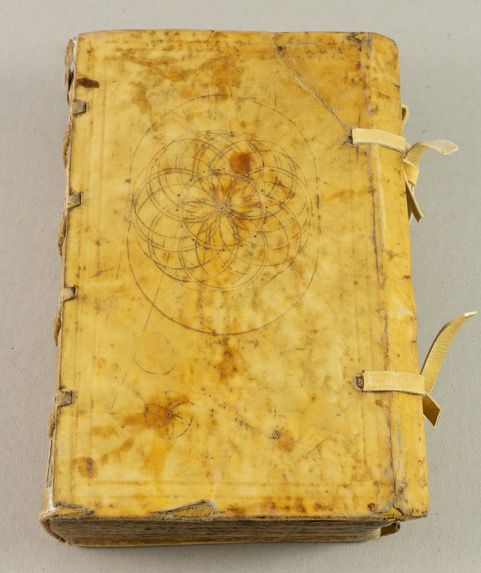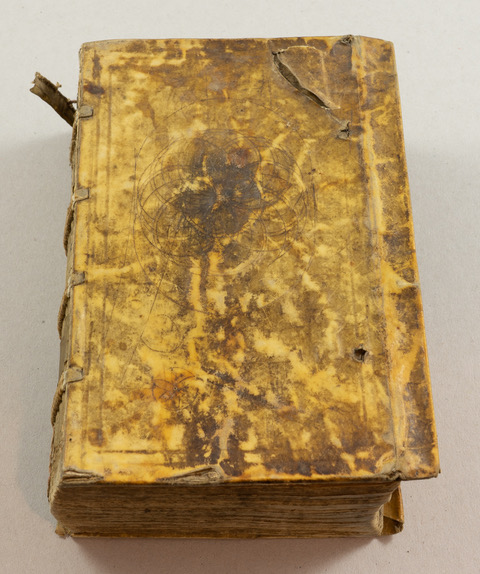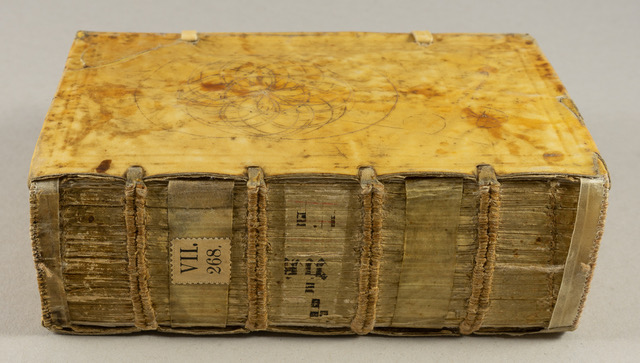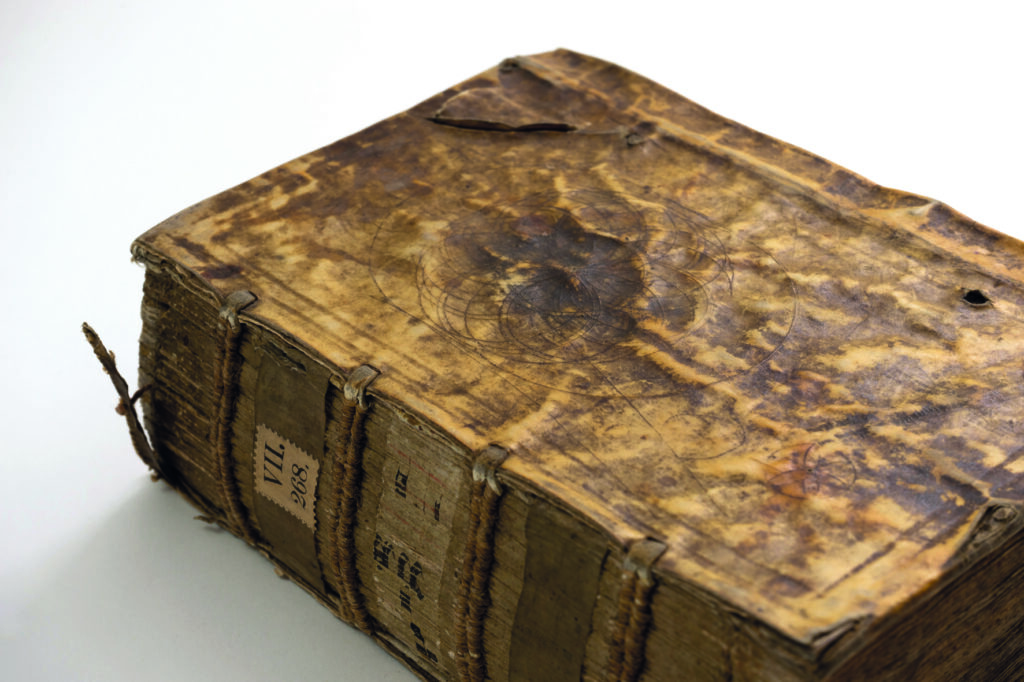Käesoleva lõputöö teemaks on 16. sajandil trükitud pärgamentlõike-tehnikas aldiini konserveerimine. Eesmärk oli objekti seisundi stabiliseerimine ja edasiste kahjustumise peatamine.
Teoreetiline osa annab ülevaate pärgamendist kui köitematerjalist. Konserveeritavast objektist lähtuvalt sisaldab töö pärgamentköidete klassifikatsiooni kaane konstruktsioonide alusel. Köitetehniliste näitajate poolest klassifitseerisin konserveeritava objekti poolpehmekaaneliseks läbipistetud köitmetega käänisservaliseks pärgamentköiteks. Suurt huvi tekitas konserveeritava objekti dekoratsioon, mille tuvastamiseks tutvusin pärgamentköidete kaunistusviisidega ja määrasin objekti kaantel oleva tehnika. Selleks osutunud lõiketehnika oli täpsust nõudev ja töömahukas, mistõttu leidis teistest kergemini teostatavatest tehnikatest kasutust harvem. Lõputöö raames viisin läbi uuringu raamatukogude ühiskataloogis ESTER olevatest Tallinna Toomkooli raamatukogu köidetest, mille tulemusena leidsin veel 8 ornamenteeritud pärgamentköidet. Uuringu
tulemusena valmis register Tallinna Toomkooli raamatukogu ESTER kataloogis asuvatest pärgamentköidetest. Materjali tundmaõppimiseks ja ajalooliste köitetehniliste võtetega tutvumiseks valmistasin uue, originaalile sarnase pärgamentköite.
Kõige olulisema osa lõputööst moodustab 1582. aastal Prantsusmaal trükitud pärgamentlõiketehnikas aldiini konserveerimine. Objekt kuulub Tallinna Ülikooli Akadeemilise Raamatukogu Baltika ja vanaraamatute säilitamise osakonna varukogusse ning pärineb 700 aastase ajalooga Tallinna Toomkooli raamatukogust. Konserveeritav objekt oli tugevalt kahjustunud. Lõputöö raames tegin sellele vajalikud konserveerimistööd, stabiliseerides selle seisundi ja peatades selle kahjustumise. Konserveeritud objekti paigutasin arhiivipüsivasse hoiukarpi.
Tänu lõputööle sain tutvuda pärgamendi kui köitematerjaliga ja omandasin praktilise kogemuse sellega tegelemisel.
The aim of the present study is a conservation of an aldine from the Library of the Tallinn Cathedral School. This rare parchment binding, printed in 1582 in Lyon, France, has exceptional cover decoration. The name Aldine comes from Aldus Manutius who was a famous Italian scholar, educator and founder of the Aldine Press. The book contains the works of Cicero and belongs to the Baltica and Rare Books Conservation Department of the Academic Library of the Tallinn University (TLÜAR X-767).
The theoretical study is divided into three parts. The first part gives an overview of parchment as a binding material, describes different parchment binding types and decorative techniques. There are three major types of parchment bindings – limp, semi-limp and stiff bindings. Those types are divided into different subtypes. The most common type is limp binding and there are wide range of articles in literature and studies about this type. Less attention is paid to other types which appear to be much more common compared to limp bindings. Decorative techniques used on parchment bindings, are the same as used on leather bindings. They are painting, tooling and gilding. One technique which is more laborintensive and demands more precision, is incising. This is the technique used also on 1582 aldine.
The second part of the thesis gives an overview of the Library and the books of the Tallinn Cathedral School and their importance in Estonian history. The database of the of the Library of the Tallinn Cathedral School was examined and from 1068 bindings 257 books were found bound in parchment. Only 8 of them were characterized as colored or decorated. From observations, there were only tooled parchment covers. Those eight bindings are characterized, and their damages are represented in Annex 2 (Lisa 2). In addition, author generated a register of the Library of Tallinn Cathedral School parchment bindings which are included as an electronic file (Annex 1 (Lisa 1)).
The third part focuses on the conservation of the main object. There is a thorough description of the binding and its condition. For deeper study, a copy of the aldine was made using parchment and structural binding methods as used in the original book. The process is given in Annex 3 (Lisa 3). Conservation report consists of the analysis of object condition, the description of damages and the conservation plan about conservation treatments. In addition, detailed descriptions and photographs. The conservation report is given in the Annex 4 (Lisa 4).
The conserved parchment binding is handed over to the Academic Library of Tallinn University with recommendations for further care and storage.












